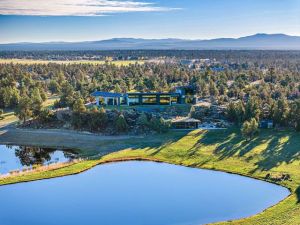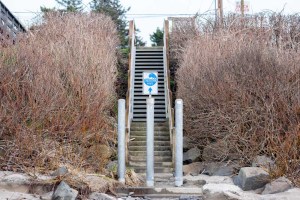Native wild plants bloom in Central Oregon
Published 11:56 pm Thursday, April 20, 2017

- Lupine is one of the most showy of purple wildflowers.(Bulletin file photo)
As Central Oregon thaws after a historically snowy winter, native flora — wildflowers, shrubs and trees — are reawakening. While our high desert sees far fewer blossoms than much wetter environs like the Willamette Valley, our blossoms, perhaps for their scarcity, seem to bloom all the more dramatically.
To give you a quick-and-dirty guide to spring blossoms, The Bulletin spoke with several local authorities about native wildflowers, shrubs and trees for which to keep an eye out as you return to your favorite hiking trails this spring. Sarah Whipple, owner of the Bend Pine Nursery, Amy Jo Detweiler, an associate professor of horticulture at the Oregon State University Extension Service and Karen Theodore, co-owner of Wintercreek Restoration & Nursery, provided the following descriptions of native flora that make Central Oregon’s spring so compelling.
Trending
Native wildflowers
• Oregon Sunshine (eriophyllum bantam): These are perennial, desert-dwelling, low-growing — about 6 inches or so — yellow daisy-like flowers. Oregon Sunshine has sage-colored leaves and stems. This flower grows in small clumps throughout the sagebrush areas.
• Indian paintbrush (castilleja linariifolia): This wildflower grows in mountain meadows and open areas around Central Oregon. A perennial, it reaches a height of 12 to 18 inches. The pinkish blossoms are edible, but “They’re too pretty to eat,” said Theodore with a chuckle. The Indian paintbrush is a hummingbird magnet.
• Native lupine (lupinus latifolius): Its blue-purple flowers grow on tall stalks which also feature silver-green, finger-like palmate leaves. The perennial grows in meadows, prairies and forest clearings throughout Central Oregon.
• Yarrow (achillea millefolium): This perennial produces many small white- and cream-colored flowers that form a flat umbel — a flower cluster whose stalks grow from the same point — similar to a flowering carrot or parsley. It has green fern-like fringe-y leaves and grows in forested and deserted areas of Central Oregon. The yarrow is a very important plant for pollinators, such as bees and especially butterflies, the latter for whom the flower acts as a landing pad where they can sit and feed on nectar.
• Penstemon: There are around 20 native species, which range from herbaceous to woody. Some are evergreen and vary in flower color from white to red to violet-blue. In Central Oregon, penstemon is found from1,500 feet up to alpine elevations. It’s a good source for pollinators.
Trending
Native Shrubs
• Manzanita (archtostaphylos): These evergreen shrubs grow about 3 to 4 feet tall. They have shiny, waxy round leaves and a distinctive mahogany-colored bark and stems. They’re found throughout Central Oregon in ponderosa forests and are popular among many local gardeners. Blossoms are small, delicate, pink and bell-shaped. Manzanitas are beginning to flower now and their ample nectar source is attractive to hummingbirds and bees.
• Pink-flowering wax currants: These currants, which are flowering right now, are very common species along most trails in Central Oregon. The deciduous woody shrubs give off white to deep-pink blossoms and bright-red berries in the fall. These bird-friendly shrubs are found in ponderosa and sagebrush plant communities.
• Snowberry (symphoricarpos albus): A deciduous, woody shrub, it features round, soft green leaves and tan woody stems. The snowberry’s blossoms are pinkish white and bell-shaped, and it retains its white berries into the fall and winter, long after it has shed its leaves. The flowers attract birds, but the fruit itself is not desirable. It grows 4 to 5 feet.
• Serviceberry (amelanchier aquafolia): This shrub offers white flowers and rounded green leaves. It is commonly found in ponderosa forests. In the fall, the purple fruit is highly desired by birds, particularly robins and cedar waxwings.
• Redosier Dogwood (Cornus sericea): This tree give us star-shaped white blossoms. In the fall, its orange-red colors pop along stream and river corridors, where it grows 6 to 7 feet tall. Its cherry-colored bark gives it an interesting profile, particularly in winter.
Native Trees
• Klamath Plum (prunus subcordata): This plum tree gives off white flowers in the spring and, in the fall, tart, edible fruit about half the size of a store-bought plum. Scrub jays ravage the fruit. While Central Oregon is home to Klamath plums, they’re more common in Lake County.
• Willows, cottonwoods and aspens: A variety of willows — which don’t typically grow to tree-height in Central Oregon — are flowering in Central Oregon and are early food sources for bees. Cottonwoods and aspens are also food sources. There is “nothing sexy” about these trees’ flowers, Theodore said; their purpose is to simply spread progeny. Cottonwoods are typically found around Cascade Lakes, creeks and streams.
— Reporter: 541-617-7816, pmadsen@bendbulletin.com








